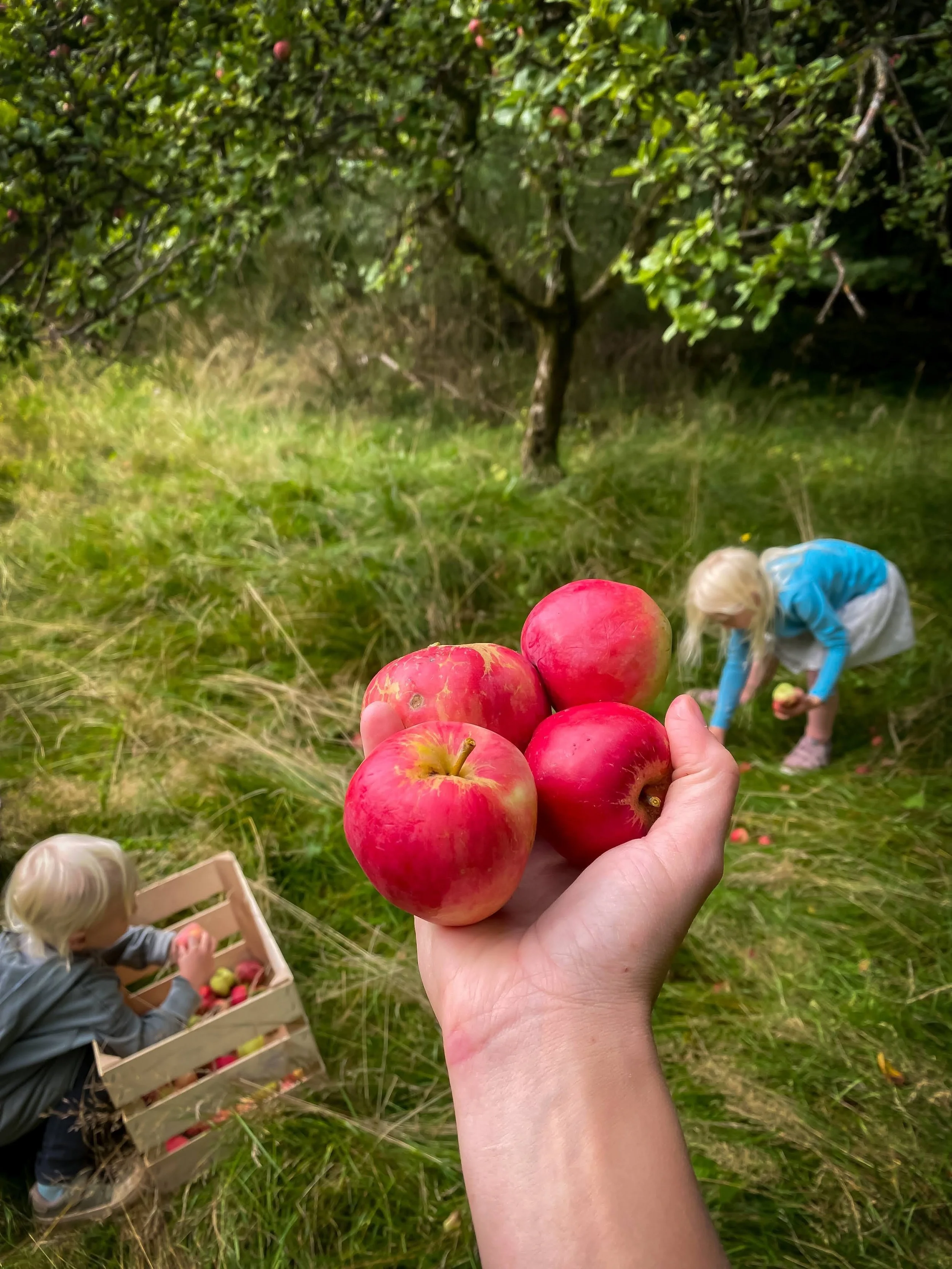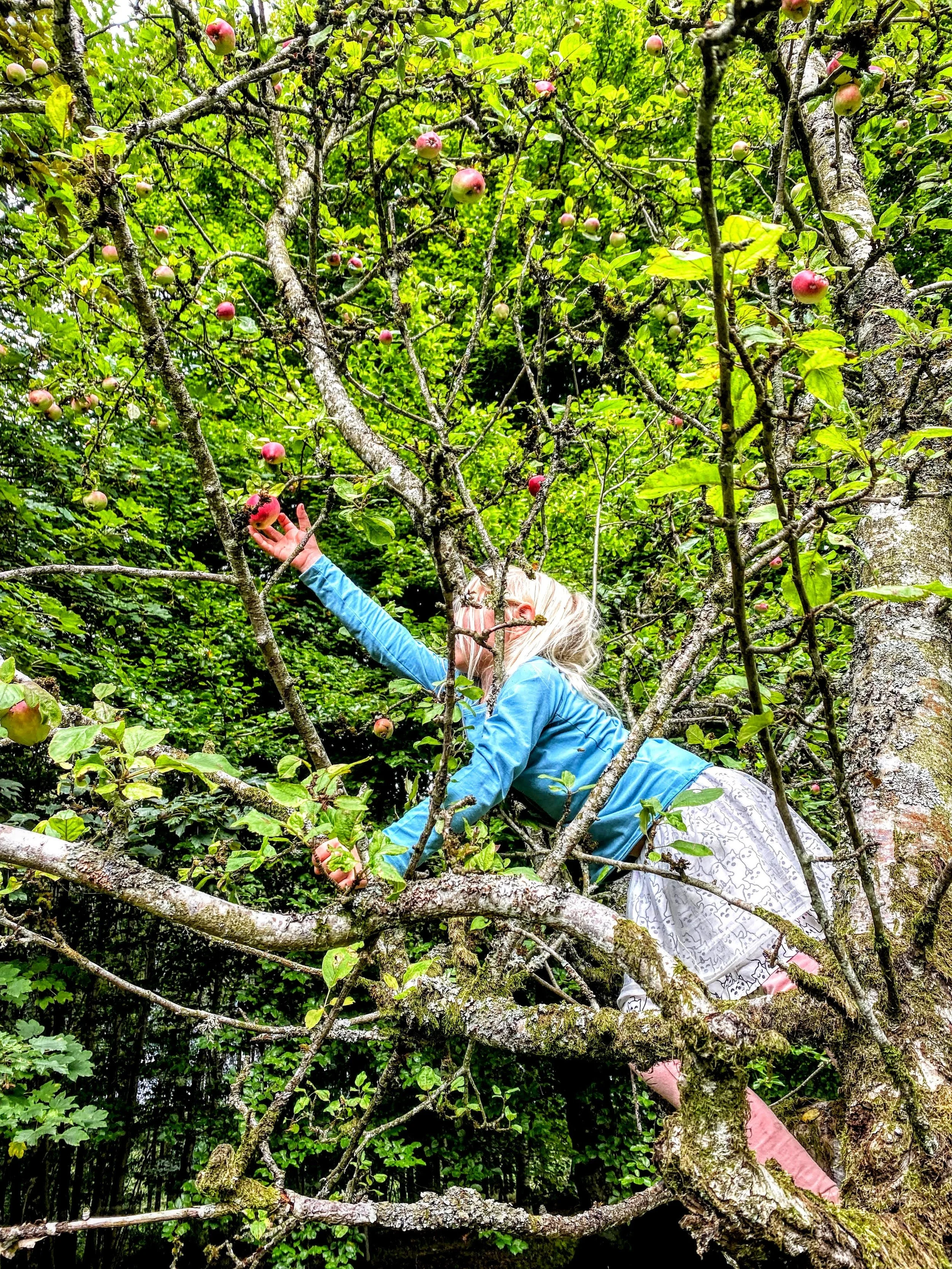Plucking Apples and the Æblerov apple-snatchers
In Denmark, we have a charming tradition known as "æblerov," which literally translates to "apple plunder." It sits somewhere between foraging and stealing, and in the Danish spirit, it's all in good fun.
Children are often expected to partake in æblerov, but let's be honest, adults get a kick out of it too! It's not uncommon to find crates of apples sitting unattended by the curbside, without even a sign. Locals know they are free for the taking—perhaps three for a pie, or just one for an afternoon snack.
It's essential to understand that apples don't grow true to seed. If you plant the seed of a named variety—say, a 'Granny Smith' or 'Gala'—the tree that sprouts won't bear the same kind of apples. Instead, the named varieties you're familiar with have been cloned, in a manner of speaking, from an original tree through a process called grafting. These grafted branches are then grown on wild apple rootstocks.
In our own orchard, we've grafted a few branches to bring in some of the flavors we love. However, our æblerov adventures mostly lead us to wild or feral apple trees. These unplanned varieties offer a treasure trove of tastes and textures—some crisp, some mealy, some sweet, some sour. And that's precisely what makes æblerov such a joyful escapade.
We usually press our apples in three big batches, requiring three or four crates of apples. This leaves us with at least 5 liters of apple juice each year. But then there are the so-called "apple years," the years when apple trees are exceptionally generous, potentially tripling our harvest.
Recognizing when an apple tree is ripe for the picking—quite literally—is an essential part of a successful æblerov. Here are a few tips we've found helpful over the years:
The Fallen Ones
First, look for 'windfalls'—apples that have dropped naturally to the ground. If you see a fair number lying beneath the tree, that's usually a good sign the tree is ready for harvesting.
The Twist Test
Another handy technique is what we like to call the "half-twist test." Grasp an apple and give it a gentle twist. If it comes off the branch with just half a twist, it's ready to join your basket. If it resists, it might need a little more time on the tree.
Check the Seeds
Cut an apple open and examine the seeds. If they're a dark brown or blackish color, that's another good indicator that the apple is mature. If the seeds are white or light brown, the apple probably needs more time.
Taste Test
And, of course, there's the old-fashioned taste test. Take a bite! But keep in mind, not all apples are going to be sweet. Some are naturally tart or even astringent. Those are perfect for cooking, where you can balance the apple's natural flavors with added sugar and acidity.
The Shake Method
If you're still unsure, one last method we often employ is to clean up the fallen apples from under the tree, and then give the branches and trunk a good shake. Any apples that fall are ripe and ready for your basket. If they don't shake loose, they're probably not ripe enough.
Armed with these tips, your next æblerov adventure is sure to be a fruitful one Happy foraging!




